Analytics
Having an eCommerce app and not tracking down things is not going to help improve your online business. Google provides Firebase Analytics for eCommerce which helps you monitor and take necessary actions to grow your online business.
This article introduces the applications of Google Firebase Analytics for eCommerce.
Dashboard:
Google Analytics provides a dashboard where you can view the details about the app users and more Inside the dashboard you get a described overview of the app user.
Active app users
Knowing the daily active users of the app is really necessary to manage the store. Because that is raw data with which store owners can make a forward decision in their business.
Google Analytics can give you answers for the following questions?
- The daily customers and customers in the past 30 minutes.
- How often are your customers converting?
- where are your users engaged?
- How much revenue is your app making?
- Is your app Stable
- How do you acquire new users?
- How well do you retain users?
- What is your audience like?
- What is your platform Breakdown?
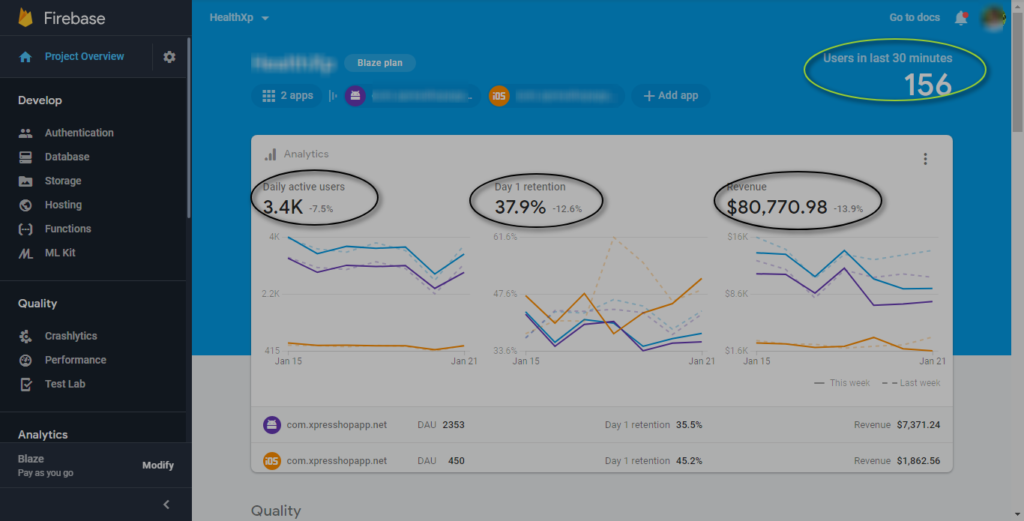
For example, the above image is a Firebase overview of an E-Commerce app that sells some products through WooCommerce iOS and Android apps. And this will be the E-Commerce store’s data that I’ll be addressing further as E-Store.
And with Google Firebase analytics, the store owner gets accurate information about the active app users.
For example, the e-Store has about 3.4k daily active users and 156 users in the past 30 minutes.
The store owner can use this data to decide upon the offers and deals that they should give to engage more customers with the shop.
At the end of the day, you can evaluate the net app users, and the total profit gained. For this complete retention and revenue details provided within the analytics can be used.
If you have multiple apps including iOS and Android apps set up for your eCommerce store, you can individually view its active users.
Filter option
Google Analytics lets you filter out results.
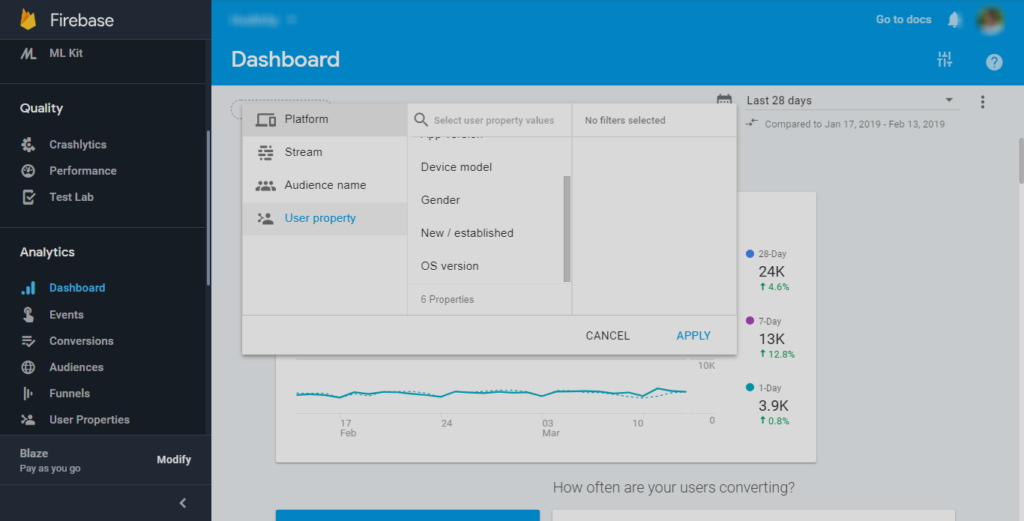
You can change the filter attributes and view the stats such as:
- Android app users
- iOS app users
- The audience that has made a purchase
- Users who have abandoned the cart
- New Installs
- Gender
- App version
- OS version
Events
Are you aware that every interaction that your eCommerce shoppers make in the app can be tracked and viewed?
For an eCommerce app, the user interactions typically include:
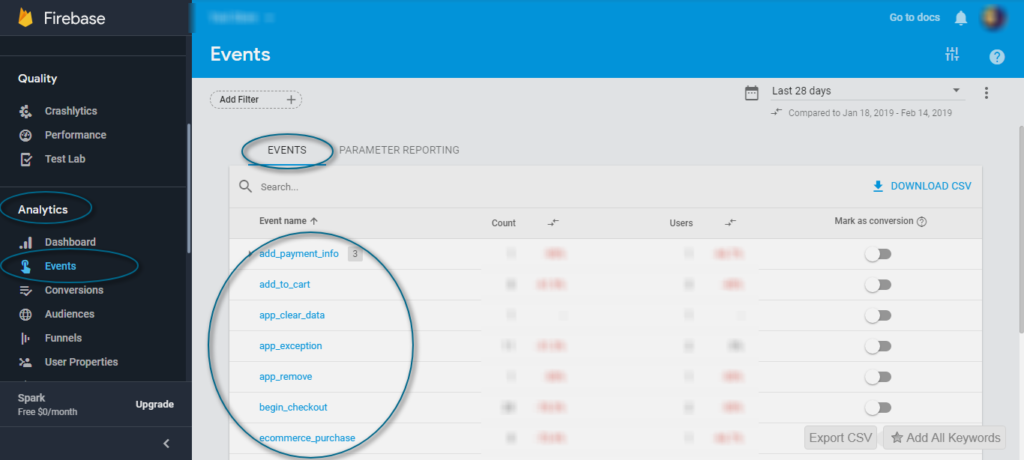

List of events in an eCommerce App
Let’s see how else event option can be explored for an eCommerce store.
Each event can give you information such as:
- Event Count: Which says how many time the users have done that event. With this data, you can learn and understand the most happened event.
- The Event Location: This gives the location details like from which country the users have gone to the event.
- Event demographics: With this data, you can learn about the gender who has done most of the events.
- Event Per session: This gives us information about how many times a particular event has happened in a user’s session.
Note: You can view and compare the event statistics for a particular day, week and month.
Conversions
Google Analytics helps eCommerce store owners with the question- ” How often are your users converting?”
The Actual conversion points can be discovered using Conversion Events. Users can add or remove any conversion events and view app stats.
For Example, let’s set an event ”view_search_results‘ of health E-Store.
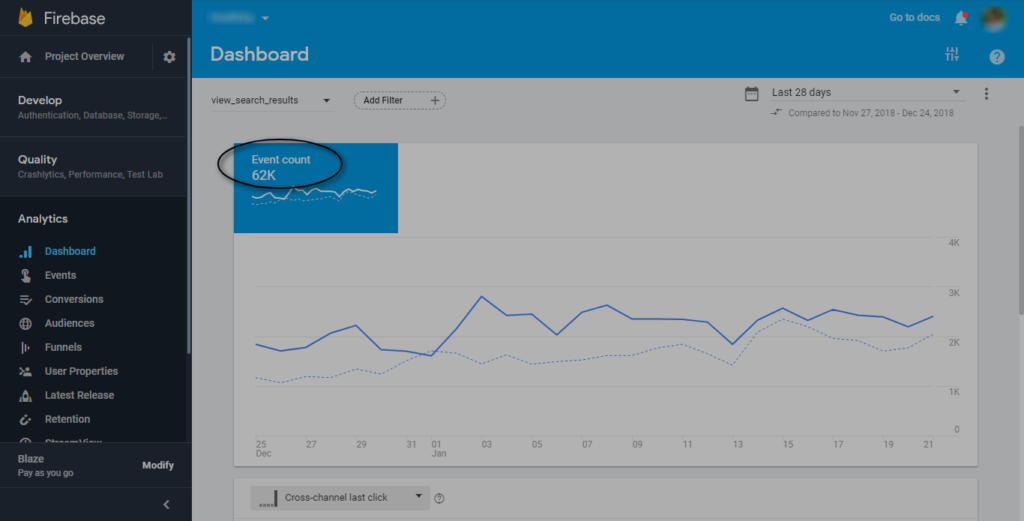
The event count, which is 62k is the number of users who have viewed what they searched for.
Let’s see how many of them actually purchased the product by filtering the same result.
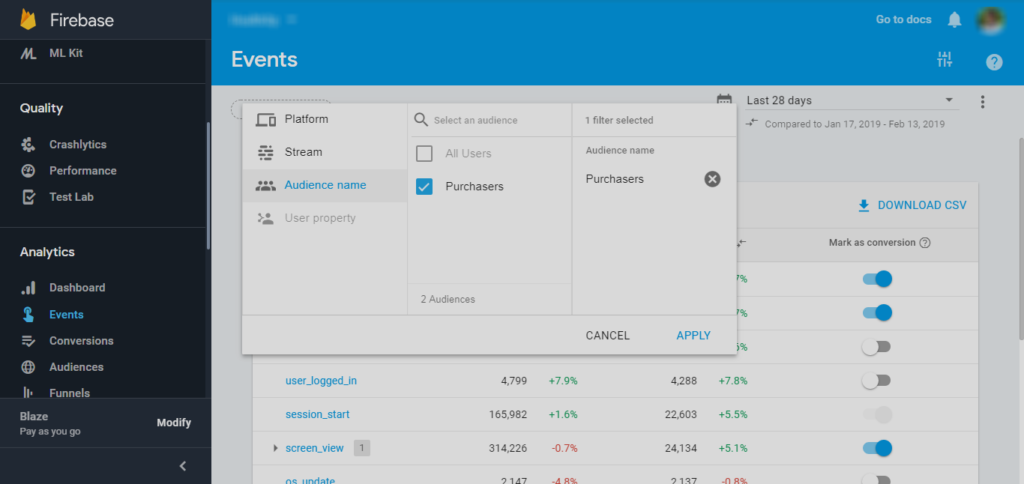
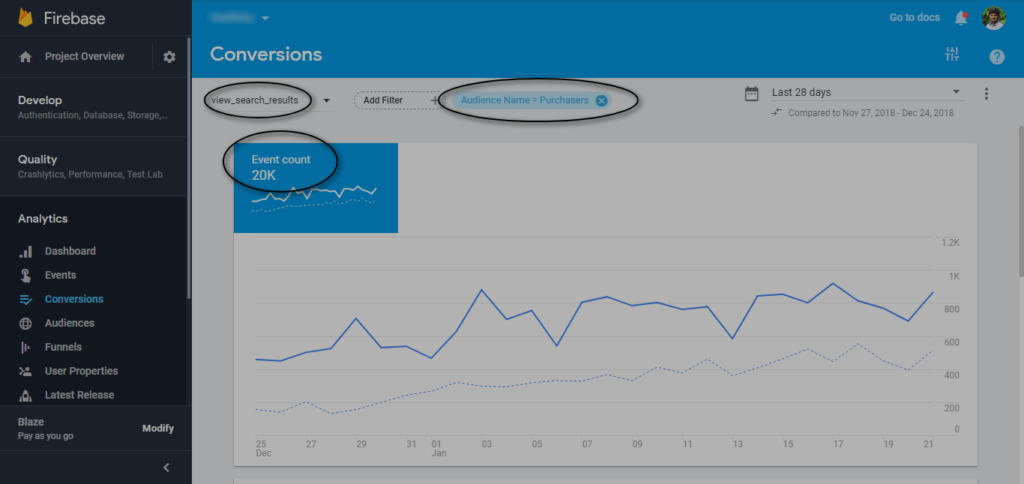
When filtering the above result, we get 20k people who purchased it. And remember, it’s out of 62k users which means that the total number of users who left without purchasing is about 66%. That’s quite a figure.
This data can be used by the Store owners to figure out the reasons why the shoppers have left without completing the shopping.
Now we have an idea about the churned customers of a category. Similarly, the conversion rates for each event can be easily found and compared.
Audiences
Knowing your crowd can benefit you in multiple ways. Users’ behavior can be used effectively to design your products suiting to their demands and interests. Moreover, this helps you decide on the services and make sure they are at reasonable rates for the shoppers.
Knowledge about the user behavior can help you choose the best promotion strategies and influence every buying decision the users make.
Google Analytics can help you gain insight into your app users. Including the whole app users and the ones who make purchases.
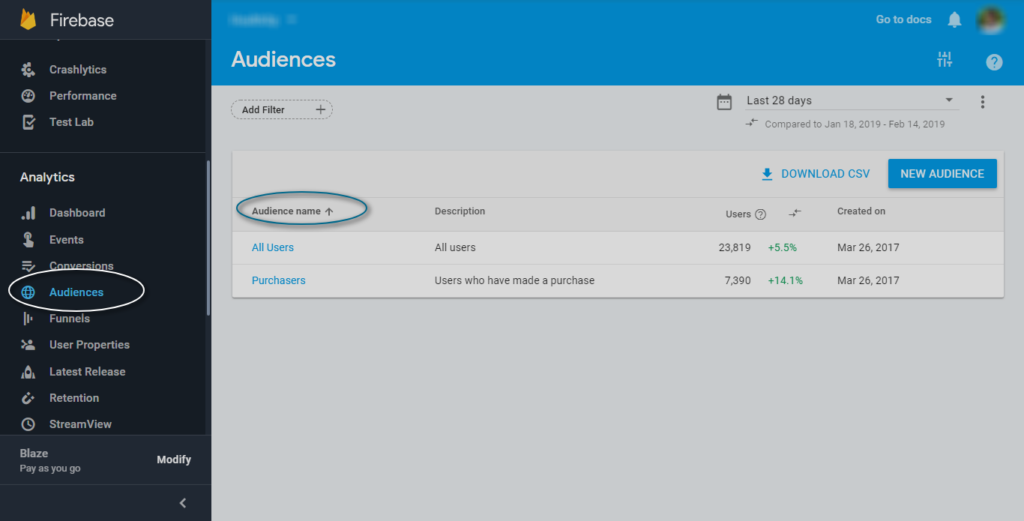
The eCommerce store owners can categorize create audiences and monitor their activities within the app.
For example, the eStore has created two audiences, all users and purchased users.
When you look into the stats of the purchased users you can see:
- The number of users that have made the purchase among the total app user
- The Affinity users, which says the identified category the users are interested in.
- The location of the selected audience
- The demographics of the users
- And the platforms through which the users do the purchase
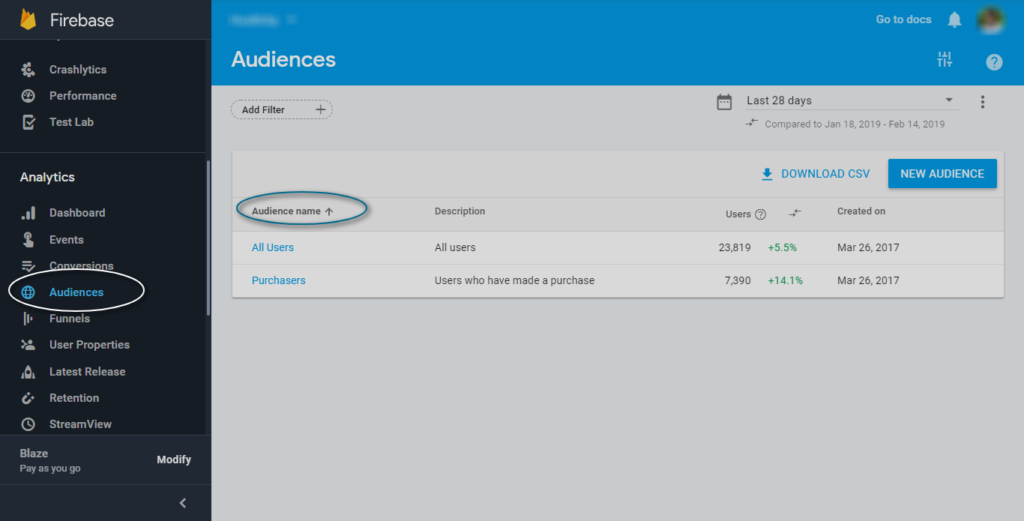
Creating an audience list
Consider that you want to know about the users who leave the app without completing a purchase. For this, you can create a new audience list.
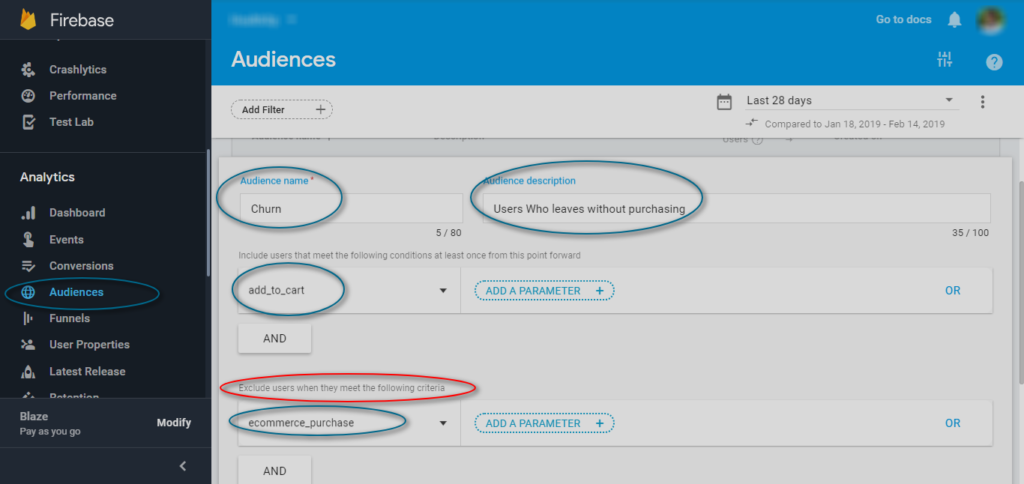
For example, here I have created a new audience list here- ‘Churn‘ with a description- ‘Users who leave without purchasing,’ so that I remember the purpose why built the audience.
After that, I used the filter option to find out the churn users of the app.

Here to find out the churned users, I set the filter to the event ‘Add_to_cart‘.This will filter out all the users that have added a product to the cart.
But this is not enough for me to find out the users who have added the product to the cart but has not made a purchase.
Here I need to exclude the users who have completed the purchase, and the rest of the users is the Audience that I want.
For this, I am adding an exclusion group:
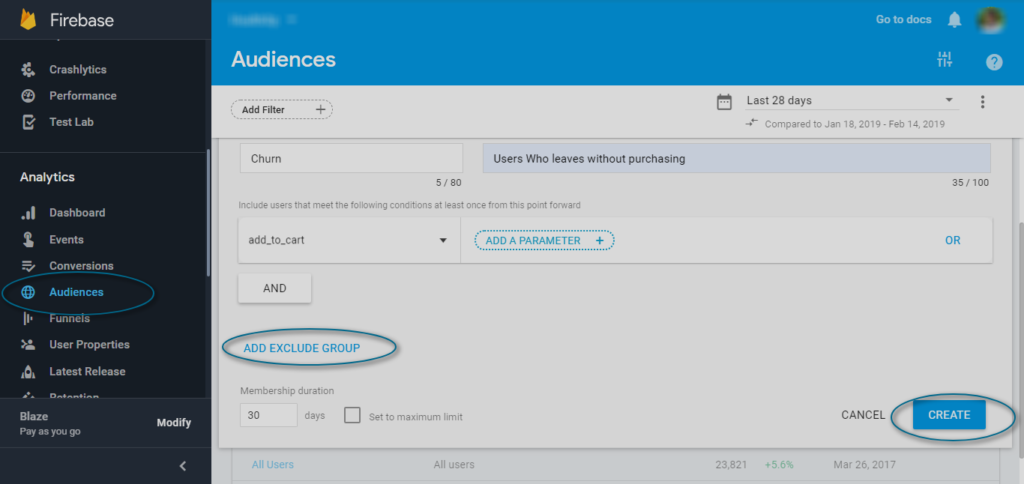
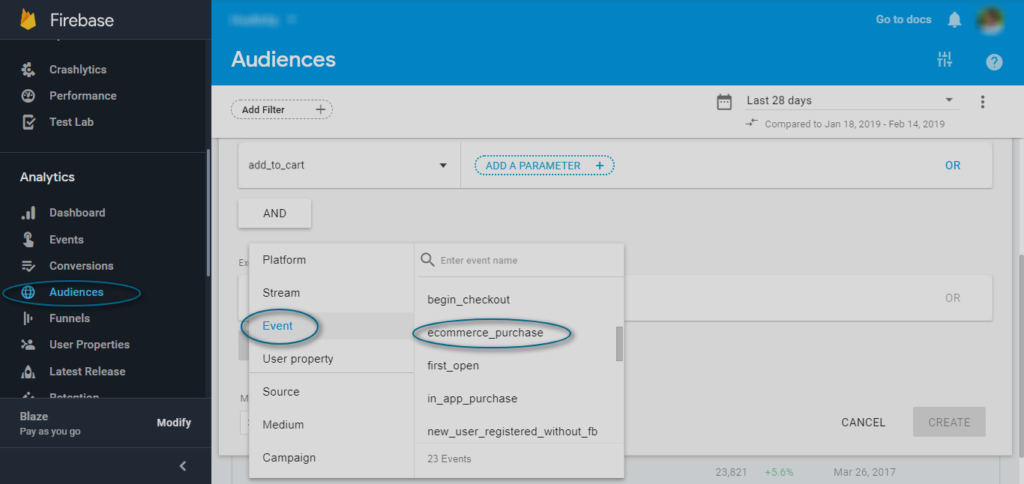
Likewise, you can create an audience list and monitor each category.
By monitoring the churn customers, you can take remedies to retain the users by sending personalized push notifications to that particular audience.
Funnels
if you own an eCommerce store, you can create funnels, which lets you learn about the series of events that users go through and their activities
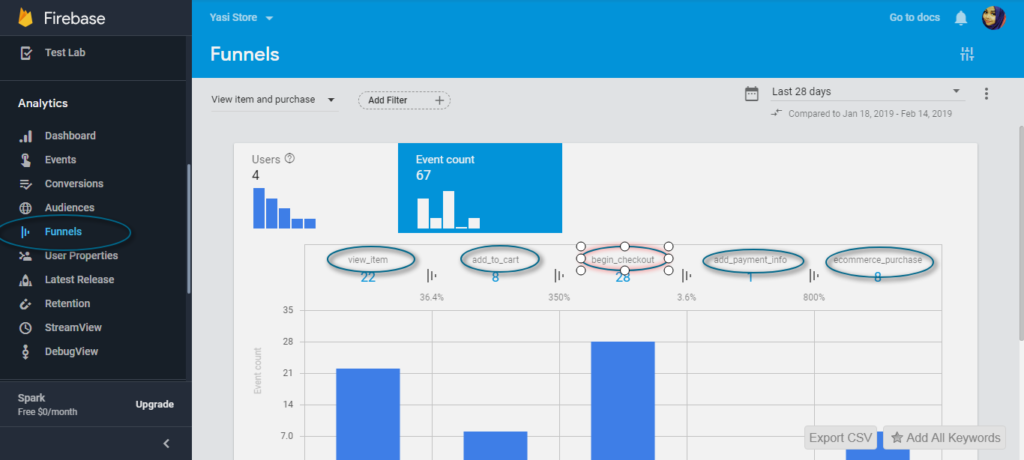
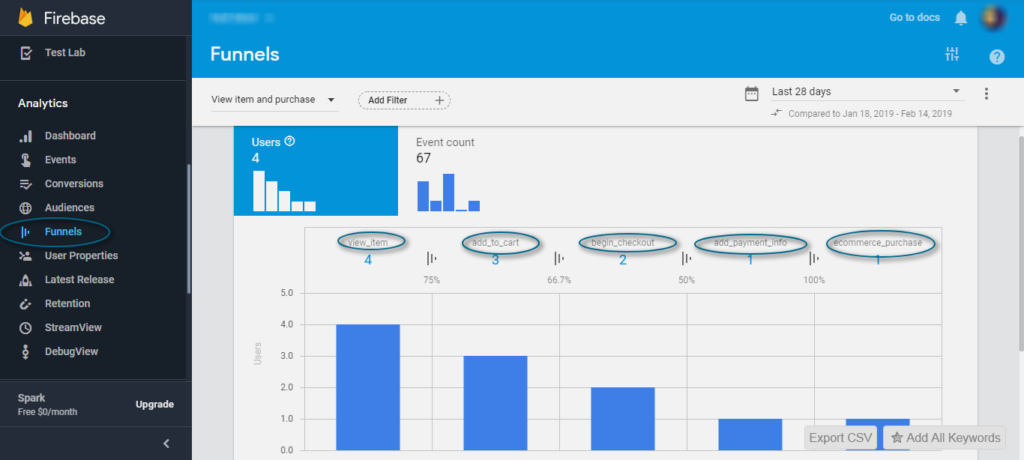
Stream View
Google Analytics gives you an option to monitor the users and events in real-time and that’s stream view

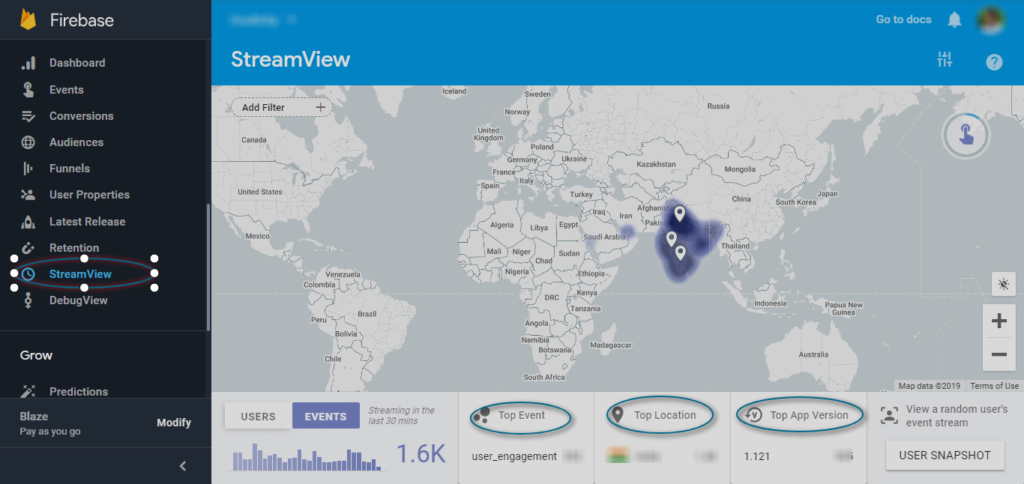
Continue reading interesting articles on eCommerce and App builder.
Own an eCommerce website? Get it converted into Native Android and iOS apps.




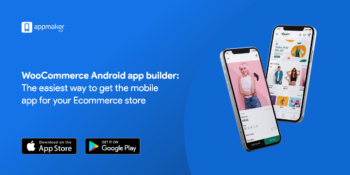







People reacted to this story.
Show comments Hide commentsHey, Thanks for the blog its really help me. I would suggest if you add the video that would amazing. & I want to learn more about it can you help me. How can I learn more analytics firebase?
Hi Amit, we are glad that our blog was helpful to you. We will come up with a detailed video on the same soon.
Meanwhile, you can use these instructions to learn setting up push notification and Firebase.
https://appmaker.xyz/docs/setup-push-notifications-for-android-and-ios-apps-and-firebase-analytics/
Hope this will be helpful to you.